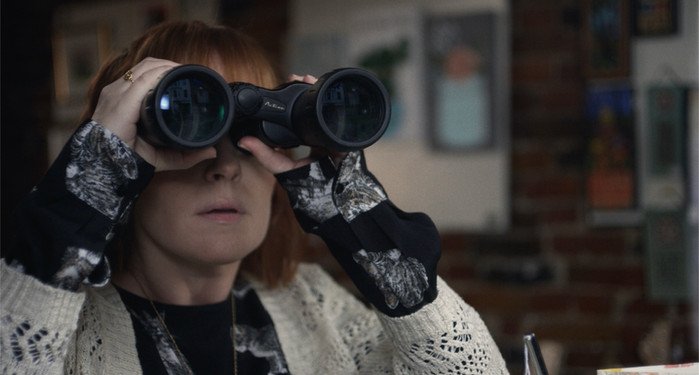Love in Kilnerry
The romantic comedy has been on an extended downslide over the last two decades as both movie stars declined in value and filmmakers pushed towards more line-crossing comedy that increased humor at the cost of charm. The post-2000s rise of the Judd Apatow school of comedy created some unabashed classics but, intentionally or not, pushed the classic studio romantic comedy into a corner to languish. Attempts have been made to reclaim it, from hazy Hallmark Christmas films to a growing streaming catalog, but the view on what the form is or can be remains split leaving new entrants to the field scrambling to decide which direction to go. Daniel Keith’s inaugural attempt, Love in Kilnerry, attempts to split the difference with its small-town tale of libido gone wild, keeping it from being entirely as charming or as lewd as it needs to discover greatness but finding some real warmth nonetheless.
The sleepy town of Kilnerry in New England is an aging community of fisherman, bars and stationary stores with more elderly than young still living there quietly going about their autumn years. The introduction of a new chemical to the water supply shakes all of that up, however, when the EPA warns the town of an unexpected side effect -- the massive increase of the town’s libido and a fall in inhibitions. As more and more of the town’s residents give over to their newfound desires it falls to the put-upon sheriff (Keith) to keep things together and protect the townspeople from themselves … whether they want him to or not.
The brainchild of writer-director-star Keith, there is a clear understanding from the start that the farther he goes down the rabbit whole of kinks and quirks affecting the townsfolk, the farther he will get from the lighthearted, charming tone he clearly wants. It leaves the film as conflicted as Sheriff O’Reilly himself, wanting to join in with the surrounding festivities but knowing that way madness lies and left with only the option to head out to the middle of the ocean and dance the frustrations away. There are feints towards memorable setups and gags, from the town pastor embracing his inner nudist to the mayors wooing of a local divorcee, but it tends to stop just short of being truly outlandish and never quite lives up to its conceit.
It mostly doesn’t need to. The further Love in Kilnerry delves into romance the less it becomes the center of the film, replaced instead with the strained relationship between prudish O’Reilly and his increasingly liberated father. Keith really is the heart of the film, keeping all of the disparate storylines tied together and willingly playing the straight man in every scenario, but Roger Simon is its soul as the Sheriff’s retired father slowly finding his way to living again, his hair and mustache becoming darker and bushier even as his son falls further and further apart. A reverse Dorian Grey, finding life where his son won’t, Fergal is the embodiment of the idea that letting go of pain and fear is ultimately freeing and necessary.
There’s nothing new or earthshattering in Love in Kilnerry, but there doesn’t need to be either. It’s focus on light romance is increasingly rare in comedy and worth celebrating when it pokes its head above water. Its refusal to lean into the crudest aspects of premise is keeps it from being as funny as it could be, but it also keeps its heart front and center in a way romantic comedy has lost. Hopefully there’s more where this came from.




